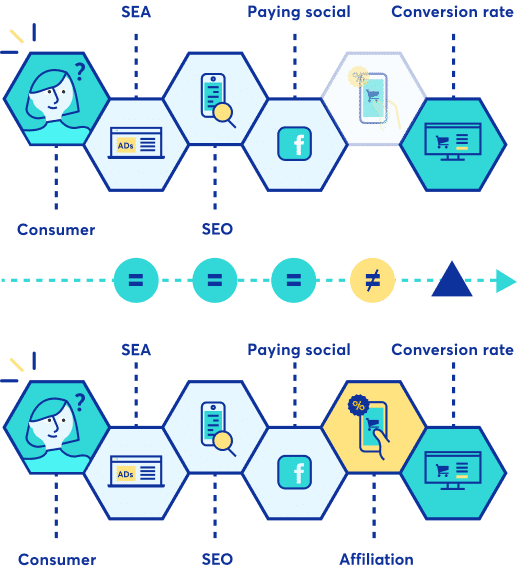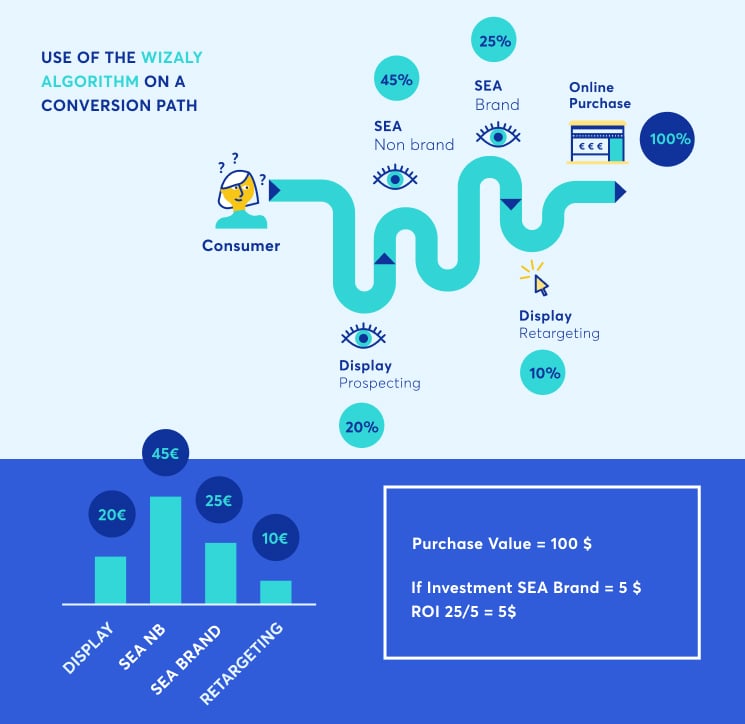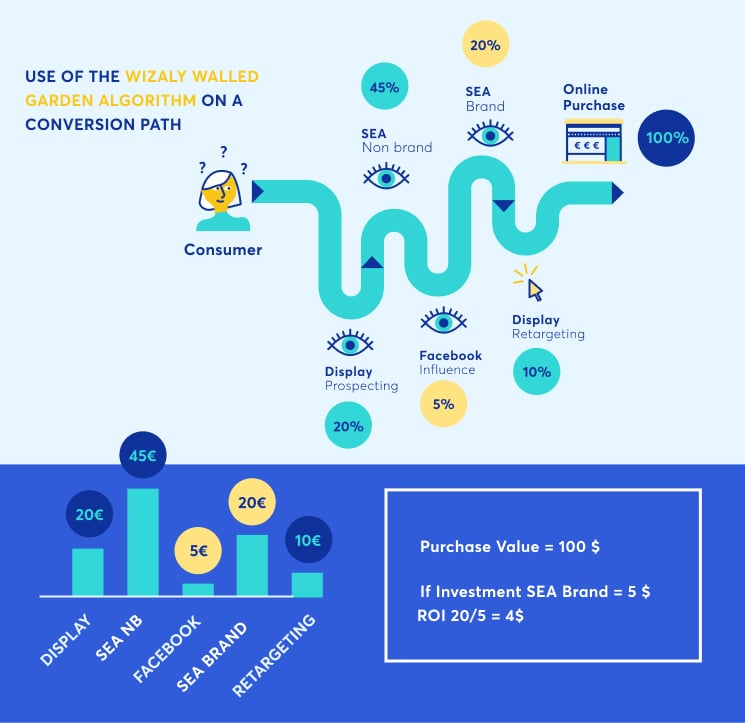TECHNOLOGY
Wizaly’s technology
At Wizaly, our advanced attribution technology is engineered to quantify each channel’s contribution to your conversions.
Consider a conversion path with various touchpoints, which could be:
- Clicks or impressions
- Offline (TV, radio, printed flyers) or online (banners, videos, search, social, affiliates, CRM).
- Paid (SEM, TV, …) or free (SEO, CRM, visit a store or call to a call center)
- Media (TV, SEM ….) or non-media (CRM, visit to a store….)
… how does each touchpoint contribute to the final conversion?
Wizaly’s algorithms are rooted in five robust technological choices:
- A purely data-driven algorithmic model
- A cooperative game theory-based model, known as Shapley Values
- A unique algorithmic consideration of the influence of Walled Gardens.
- Recognition of six key parameters: channel, medium, source, timing, type of interaction, and engagement.
- Enhancement via machine learning and artificial intelligence.
1. A data-driven algorithmic model
Attribution models fall into two categories: predefined and data-driven. Predefined models, including traditional “last-click” and multi-parameter models, rely on user-set weights for each touchpoint, potentially leading to biased results. On the other hand, data-driven models, like Wizaly’s, eliminate subjective bias, depending solely on data for analysis.


2. A cooperative model
Models can be correlated or uncorrelated.
While correlated models view the conversion path as interlinked, acknowledging previous touchpoints influence the next, uncorrelated models treat each interaction independently.
The cooperative model, specifically the Shapley Value algorithm, provides a more realistic approach, recognizing synergies between touchpoints and diminishing returns from over-exposure. Developed by Nobel laureate Shapley, it calculates each player’s marginal contribution. Wizaly favors this model for its realistic approach.
3. Measuring Walled Gardens’ influence
“Walled Gardens” are closed ecosystems tightly controlled by operators, restricting data sharing. This makes measuring individual impressions or post-view tracking difficult within such systems.
Wizaly has created a unique “Walled Garden” algorithm to tackle this challenge. Using correlated multidimensional time series, it computes the statistical impact of impressions within these closed channels, enabling accurate measurement of advertising influence within Walled Gardens.

4. A multidimensional algorithm
We incorporate six crucial parameters: channel, medium, source, timing, type of interaction, and engagement. Through this, as complexity increases, it brings our model closer to reflecting reality.
5. Optimization using machine learning
Optimizing a problem with numerous possibilities but a limited number of conversions is challenging.
Machine learning algorithms excel in handling this type of optimization problem.

We unveil our secrets: What exactly does Wizaly do?
Wizaly’s algorithm accurately measures each marketing channel’s contribution to conversions, relying solely on data.
It compares paths differing by a single touchpoint to assess that touchpoint’s impact on conversions. If a touchpoint increases the conversion rate, it gets a higher weight.
This method adapts to shifts in consumer behavior and media mix evolution, assigning appropriate credit to each touchpoint in user conversion paths.

Taking data-driven marketing to the next level
With Wizaly’s “Walled Garden” attribution algorithm, advertisers can accurately gauge the genuine influence of platforms like social networks or YouTube on their conversions.
This algorithm measures the statistical impact of ad views within “Walled Gardens”—closed ecosystems limiting third-party impression tracking—using AI.
It analyzes time series data, considering elements like channel, source, country, and device to accurately measure Walled Garden impressions’ impact.
Wizaly thus delivers precise, objective insights on each channel’s true impact in your marketing mix, aiding effective goal achievement.
Achieve an objective understanding of performance through comprehensive data collection
Wizaly integrates three key data sources for an objective, detailed analysis of your marketing mix:
Post-click tracking: By using our tag on your website, Wizaly records relevant site events, including traffic origin, conversions, and user actions, enabling comprehensive analysis of customer paths and behaviors.
Post view tracking: Our adaptable technologies, like print pixels and JavaScript tags, facilitate impressions tracking across various advertising agencies, allowing for their accurate evaluation in user conversion paths using our attribution algorithm.
Integration of media spending: Utilizing our connector library, Wizaly smoothly interfaces with most digital marketing players, effortlessly tracking your media campaign costs.


